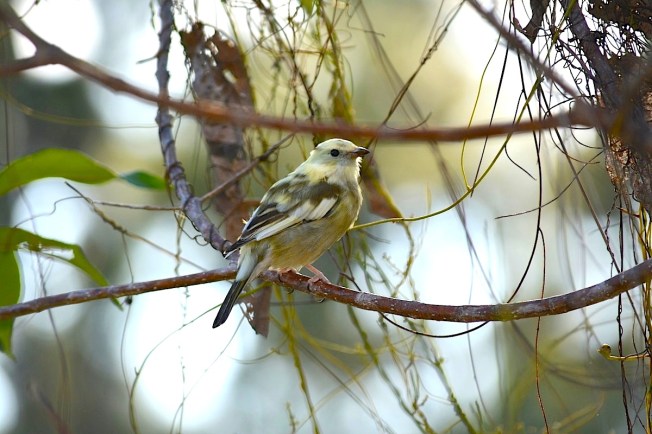BAHAMA MOCKINGBIRD
RARE LEUCISTIC VARIANT ON ABACO
The header image is of a Bahama mockingbird recently photographed by keen-eyed Abaco birder Keith Kemp. It is a thing of wonder and beauty, exceptionally rare and possibly unique. I can find no other example of a leucistic bird of this species online.
This is not Keith’s first leucistic bird discovery on Abaco either – a while back he found a leucistic Western spindalis. You can read more about leucism and its distinction from albinism, and see a number of other examples of leucism including a white turkey vulture HERE
Even more astonishingly, Keith managed to get a photo of the ‘white’ bird and a ‘normal’ bird together (above). The difference is startling. Below is a fine photo by Peter Mantle of a Bahama mockingbird, as you would expect to see one – basically brown with a pale, flecked front / underside.
LEUCISM? EXCUSE ME, AND THAT IS?
I’ll recap what I wrote in the earlier post linked above. First, what it is not. It is not albinism, which results from diminished or lost melanin production that affects pigmentation. One characteristic of the condition is the tendency to pink eyes, which of course is seen in humans as well as animals and birds. For example:
WELL, WHAT IS IT THEN?
Put simply, melanin is only one of many ingredients of pigmentation. Leucism is caused by pigment loss involving many types of pigment, not just melanin. In birds this results in unnaturally pale or white colouring of feathers that may be partial or entire. The eyes of a bird with leucism are unaffected – so, not pink. At one extreme, if all pigment cells fail, a white bird will result; at the other extreme, pigment defects cause patches and blotches of pale or white on the bird, often called a ‘pied’ effect. The condition can be inherited.
KK’s leucistic Western spindalis, an example of partial or ‘pied’ leucism
So there you have it: another extreme rarity for Abaco, and a further example of how rewarding – and surprising – birding on Abaco can be. To repeat the link to the more detailed article on leucism in birds, you can find with (*distraction alert*) some music and inappositely comedic material thrown in HERE
All photos Keith Kemp except the ‘normal’ bird, Peter Mantle







